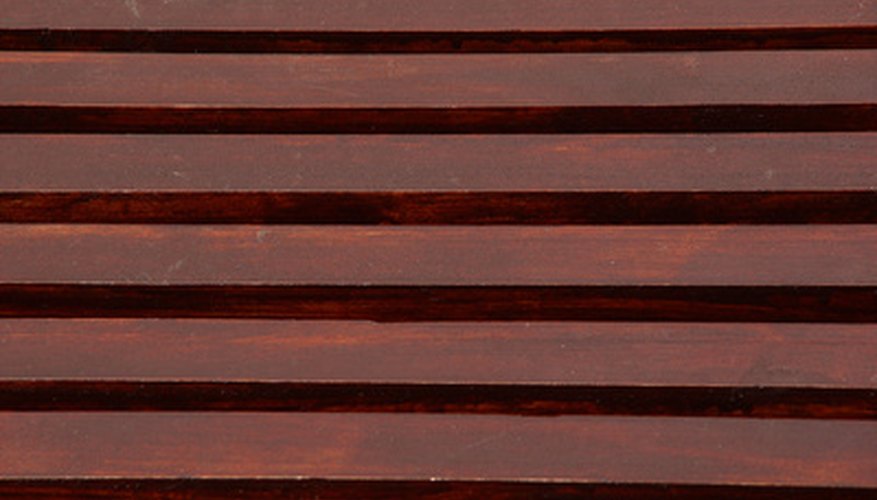Mahogany's hardness, distinctive reddish-brown colour and aptitude for polishing (it develops a very nice sheen) makes it a popular timber for constructing electric guitar bodies. When painting a mahogany electric guitar body, there are several steps you should follow to ensure you achieve an optimal finish.
Prepping
Prep your mahogany guitar by sanding its exterior smooth. Gibson recommends using a 280-grit paper. Once you have smooth surfaces, you will need to cover the guitar body with a coat of pore filler; a special solution for filling in minute spaces. This is because mahogany is porous, and without it the paint would spread on unevenly due to subtle differences in the grain. You can apply the filler using a paintbrush. Make sure to wipe of the excess with a towel before allowing to dry.
- Prep your mahogany guitar by sanding its exterior smooth.
- Once you have smooth surfaces, you will need to cover the guitar body with a coat of pore filler; a special solution for filling in minute spaces.
Applying Paint Coats
Major guitar manufacturers use specialised spray guns to evenly apply their paints. According to Shredaholic, a cheaper alternative is to use aerosol paints. In either instance, you will want to tape or otherwise colour all of the areas of your guitar that you will not paint (like the neck and fret board). Since aerosols are not as effective as the professional grade painting guns, you will likely want to apply a few coats of a grey or off-white primer before applying five to six coats of your colour paint. Keep in mind that the more coats of colour you apply, the deeper the colour will become.
- Major guitar manufacturers use specialised spray guns to evenly apply their paints.
- Since aerosols are not as effective as the professional grade painting guns, you will likely want to apply a few coats of a grey or off-white primer before applying five to six coats of your colour paint.
Lacquering
The lacquering process is what gives electric guitar bodies their distinctive glossy appearances. For best results, you should apply several coats of a clear-coat lacquer to your mahogany guitar body, and allow each coat to dry thoroughly before applying the next. Major electric guitar manufacturers utilise large ovens to dry the lacquer in between applying layers, and often apply six coats.
Peeling
Peeling can be a challenging process, and typically requires precision and a steady hand. According to Gibson, peeling refers to the scraping away of lacquer and paint using sharp blades; the goal being to remove unwanted layers from the bodies' bindings and nuts. After peeling, you should give your guitar a quick scuff sanding, wherein you simply rub all of the surfaces smooth with your hand.
Polishing
Applying a few layers of polish will give your mahogany electric guitar body's paint job an extra shine. Gibson utilises three different polishes for mahogany bodies: a red compound for smoothing out the surface, a white for highlighting the outer lustre and a yellow for generating some extra brightness.
